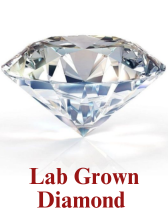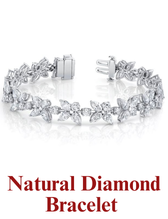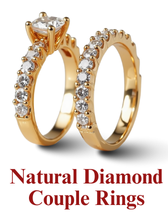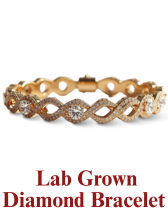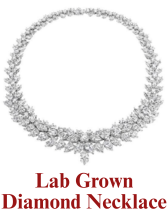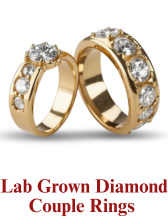Introduction
When it comes to choosing the perfect diamond, the debate between lab-grown and natural diamonds is more relevant than ever. In recent years, lab-grown diamonds have emerged as ethical and sustainable alternatives, redefining the luxury jewelry market. Whether you're searching for lab-grown diamond rings for women or natural diamond jewelry for women, understanding the key differences can make all the difference. Let’s explore lab-grown vs natural diamonds in terms of origins, cost, appearance, environmental impact, and more.
What Are Lab-Grown Diamonds?
Lab-grown diamonds are created in controlled laboratory environments using advanced technologies that mimic the natural processes deep within the Earth. These diamonds are identical to natural diamonds in composition, sparkle, and hardness but are formed in a much shorter period.
Are Lab-Grown Diamonds Real?
Absolutely! Lab-grown diamonds are composed of pure carbon and possess the same physical and chemical properties as mined diamonds. They are certified by gemological institutes, just like natural diamonds.
What Are Natural Diamonds?
Natural diamonds are formed over billions of years under the Earth’s crust through intense heat and pressure. These gems are mined from the ground and are often considered timeless symbols of rarity, tradition, and geological marvels.
Lab Grown vs Natural Diamonds: Key Differences
1. Origins
- Lab-Grown Diamonds: Manufactured in laboratories using methods like High Pressure, High Temperature (HPHT) or Chemical Vapor Deposition (CVD).
- Natural Diamonds: Mined from natural sources, formed over billions of years.
2. Cost Difference
- Lab-Grown Diamonds: Typically 20% to 40% more affordable than mined diamonds.
- Natural Diamonds: Higher price due to rarity, mining costs, and traditional appeal.
3. Ethical Considerations
- Lab-Grown Diamonds: Considered an ethical and sustainable diamond option as they avoid ecological disruptions and human labor issues often tied to diamond mining.
- Natural Diamonds: Mining can sometimes involve unethical practices and adverse environmental impacts, though responsible sourcing is available.
4. Appearance and Quality
Both lab-grown and natural diamonds are visually identical. Experts cannot distinguish the two without advanced equipment. However, grading reports clearly specify whether a diamond is lab-grown or mined.
5. Environmental Impact
- Lab-Grown Diamonds leave a smaller environmental footprint. They don’t involve mining and require less land and water.
- Natural Diamonds may include ecological damage from mining processes, though some brands prioritize sustainable practices.
6. Value and Resale
- Natural Diamonds: Tend to hold their value better over time due to rarity and tradition.
- Lab-Grown Diamonds: May decline in resale value but offer cost-efficient brilliance instead.

Benefits of Lab-Grown Diamonds Over Natural Diamonds
1. Affordable Pricing: High-quality diamond jewelry for less cost.
2. Ethical Diamond Alternatives: Cruelty-free and conflict-free.
3. Customizable Styles: Easily available for modern designs and settings.
4. Sustainability: Reduced environmental impact.
Buying lab-grown diamond rings for women and engagement jewelry is not only financially savvy but aligns with ethical consumerism.
Should I Buy Lab-Grown or Natural Diamond Jewelry?
This decision depends on factors such as budget, values, and preferences. Lab-grown diamonds suit eco-conscious buyers who want affordability without compromising on shine and quality, while natural diamonds appeal to those valuing tradition and rarity.
Comparing Lab-Grown and Natural Diamond Rings
When shopping for engagement rings, solitaire designs, or diamond jewelry such as SolitaireKart diamond jewelry, it’s essential to understand your priorities. Here’s a summary:
- Cost: Lab-grown diamonds are wallet-friendly.
- Symbolism: Natural diamonds carry traditional significance.
- Style Options: Both offer versatility in design and setting.
Cost Difference Between Lab and Natural Diamonds
Lab-grown diamonds are priced lower than natural diamonds due to simpler manufacturing processes and lack of rarity factor. Expect savings of up to 40%, making them ideal for those shopping on a budget without compromising quality.
Visual Differences in Diamond Types
From a visual standpoint, lab-grown and natural diamonds are identical. Their brilliance, fire, and scintillation remain unmatched. Gemologists use advanced tools to differentiate them.
Are Lab-Grown Diamonds Durable?
Yes! They share the same 10/10 rating on the Mohs scale for hardness, ensuring they are as durable as natural diamonds in daily wear.
Environmental Impact of Lab-Grown Diamonds
Lab-grown diamonds are a sustainable choice with minimal mining and pollution involved. Choosing lab-grown diamond engagement rings vs natural diamonds promotes responsible consumerism.
SolitaireKart Diamond Jewelry
At SolitaireKart, we specialize in offering high-quality diamond jewelry for women, including lab-grown diamond rings and natural diamond jewelry. Whether you’re considering ethical diamond alternatives or sustainable diamond options, our exquisite range has something for everyone.
Conclusion
Lab-grown and natural diamonds each have unique qualities. For eco-conscious buyers and those seeking sustainable diamond options, lab-grown diamonds are ideal. If tradition and rarity matter most, natural diamond jewelry is the way to go. Whether you choose lab-grown diamond rings for women or natural jewelry, SolitaireKart ensures quality and craftsmanship to match your expectations. Visit us at Metropolitan Mall, GF, 39, MGF Saket Driveway, New Delhi, or connect with us at +91 87500 17007 / +91 78279 74660 for the perfect diamond jewelry to mark your moments.
 Recently
Recently Locate
Locate 


